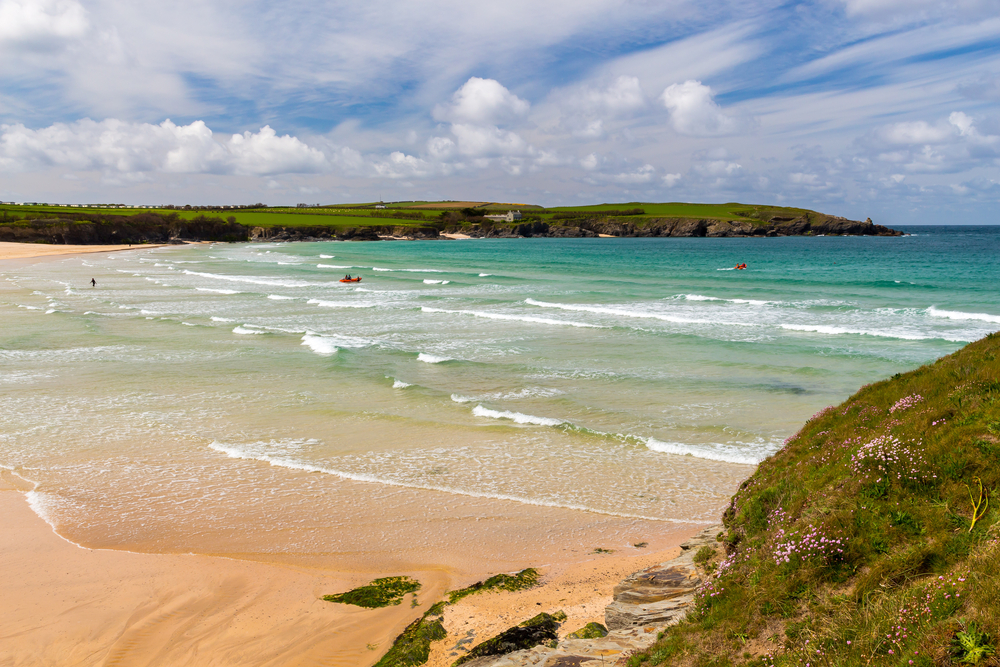The ancient manor called Harlyn House, now a luxury hotel and restaurant called The Pig, was once the seat of the Tregewe family who lived there from at least the mid 15th century onwards. The family were local MPs, sheriffs of Cornwall and benefactors in the area giving, amongst other things, an area of ground in the village for the young men of Harlyn to compete in “Cornish sports”.
When Henry Tregew died without a male heir in 1632 the estate passed to his daughter Elizabeth and her husband, Thomas Peter, and the manor then remained in the Peter family for the next 200 years. Although some of the house that you see today is thought to date from the medieval period the building has been remodelled many times over the centuries as the wealth and wants of the family grew and changed. Thomas Peter rebuilt much of it in 1635, and amazingly some of the original plasterwork he commissioned can still be seen, but there were improvements made in the 18th and 19th centuries too.
17th century legend
One strange tale related to the house dates back to the early 17th century when one of the Peter family was killed falling from his horse. Legend has it that at the same moment the man’s portrait, hanging on the wall at his home, suddenly fell to the floor and smashed. As it fell the face of the man in the painting was damaged and this damage was the same as the injury that killed the rider.
Shipwrecked sailors take refuge at Harlyn House
In 1856 the last Peter, John Thomas Henry Peter, found himself without an heir and Harlyn House and the 1300 acre estate was sold to William Hellyar, a well-to-do local farmer. The Hellyars owned the house for the next 90 years and it seems that during the 19th century the house’s proximity to the wild coast of Constantine Bay came in particularly handy. On several occasions Harlyn House became a safe refuge for shipwrecked sailors.
In April 1872 a ship called Viking found herself blown into Harlyn Bay in a gale. The captain decided to beach the ship after she started taking on water and there was a daring rescue involving rockets from the shore and the Padstow lifeboat, which had been carried overland to the beach. In the end only one of the crew was lost and the shocked survivors were taken to Harlyn House where, according to the local newspapers, Mr Hellyar “kindly attended to their wants” providing them with “dry clothes, warm beds and other requisites”.
There was another wreck in 1884 and this time Thomas Hellyar was directly involved in the rescue. The Pearl had been carried pipeclay from Poole to Bristol when she sprang a leak and began to sink fast. The captain, realising he wouldn’t make Padstow harbour, headed for Harlyn Bay. On the shore Mr Hellyar had spotted the ship was in trouble and according to the Western Morning News decided to take action and, single-handed, rowed out to the stricken vessel. The crew had managed to launch their own small boat and with Hellyar’s help all the men made it to the beach safely. Hellyar then took the crew up to Harlyn House and gave them all breakfast!

